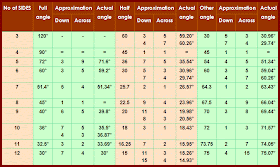





After inventing the New Year Box I began exploring the twisted look some more. I came up with the Round N Round Box. I had some trouble with the floor and am still working on it.
I turned the box inside out, and that looked good too. The problem with that model was that what started out as a six-sided box turned into a seven sided one. But the floor worked!
I remade the Round N Round Right-way-out box with seven sides. It went together better. Now it is time to make it out one more time, with a less crumpled look, before graduating to the good paper.
Many of the items which end up on this Blog are made from ordinary copy paper rather than nice paper. The reason for this state of affairs is that this blog is about my adventures in origami design, not in the folding of extant models. Designing generally results in a lot of wasted paper so it makes economic sense to use the cheap stuff to make all the mistakes with.
I was puzzled by the seven sided nature of my Round N Round Inside-out box. At first, I could not see what I had done to turn a 6-sided box into a 7-sided one. I decided it was time to do a little exploring into the realms of angles and their origami approximations. Out came the compass and the graph paper. This was followed by a visit to some web-generated geometry sites where I indulged in lots of semi-educated trial and error investigation until, finally, I "got" it.
I have added a chart to assist those of you who want to make n-walled origami boxes. It details the folding approximations which can be used to create the correct angles from a flat sheet of paper. The chart assumes that your paper has a horizontal crease, which separates the walls from the floor, and a vertical crease, which divides one wall from its contiguous wall. Your job is to create an angle between these walls which will allow the box to have n equal sides in 3 dimensional space. Your aim is to do this without using a compass to measure the correct angle and without covering your paper with a lot of complicated creases which become more inaccurate as they multiply.

While the methods listed in my chart are almost entirely approximations, they are good enough to produce a neat looking n-sided box.
